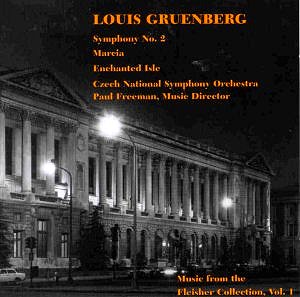The
Second Symphony blusters into action with a whirling chorus of
opposing voices and with the chaotic awesome quality of a Havergal
Brian Symphony - say the Twenty-Second. The density and unresolved
collisions of counterpoint also remind the listener of Grainger's
The Warriors and of the Ives of the Fourth Symphony. Once
it has settled down there are moments that suggest linkage with
RVW's Sixth Symphony and Havergal Brian's The Wine of Summer
and Third Symphony - especially the latter with those orchestral
pianos. The second movement is also individual, rather static
yet lyric like the middle movement of the Tippett Triple Concerto
of 1979. The Serenade is less of a troubadour
piece and more of a Marche Joyeuse (updated Chabrier);
pretty uncomplicated too with none of the chaos-infusion evident
from the symphony. The Enchanted Isle is touched
with various magicians' wands. It breathes the air of Scriabin's
Poem of Ecstasy, a little of Griffes' Pleasure Dome,
Szymanowski's incense from Krol Roger and The Song of
the Night. We know Gruenberg for his Violin Concerto, recorded
by Heifetz and now available on Naxos Historical. That concerto,
before diving into kitsch, had substantial and powerful Delian
episodes and it is into a Delian dream that the island begins
to drift before cheeky and resolute woodwind and catchy rhythmic
material of a Gallic opera-comique caste take over. These then
give place to an unresolved belligerence and striving.
Overall
if Gruenberg has a problem it is that his melodies are not really
all that memorable. Nevertheless there is something special in
his way with the orchestra and we should hear the other symphonies.
The Czech sessions seem to have been successful and I hope we
will hear more from this quarter. Good annotation as usual from
Albany.
Rob
Barnett
